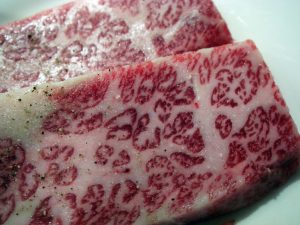
The Skinny on Japanese Kobe
Most Steak Afficianado’s think that a Kobe Steak in America is the same as Japanese Kobe Beef, same cow right? Not even close . The noticeable difference is the complex and condensed amount of fat marbled into the meat itself. The oiliness is another noticeable feature folks in America are not used to even in the finest of Prime steak houses across the U.S. or globe for that matter. The simularity is in the cow’s main classification “the Waygu” is a type of cow brought over from Japan many years ago and with that import American beef companies could now produce high grade Waygu on their own and this is where many of us consumers get confused because chances are your waiter at Mortons doesnt know as much as you will after reading this post.
A true Kobe beef producing cattle can only be black Tajima-ushi breed of Wagyu cattle, raised according to strict tradition in Hyōgo Prefecture, Japan.
In Hyogo they feed the cattle are fed a beer a day, and they are massaged with sake daily and brushed for setting fur, and fed on grain fodder. When the cattle are ready for slaughter, they are slaughtered in a humane and painless customary way in order to keep the meat tender and at its highest flavor. A Kobe beef distribution promotion conference plans to make a pamphlet in foreign languages detailing Kobe beef due to the ambiguation of what actually constitutes Kobe beef, and the fact many tourists who visit Japan receive incorrect information.
The massive increase in popularity of Kobe beef in the United States has led to the creation of “Kobe-style” beef, taken from domestically-raised crossbred with Angus Cattle, in order to meet the demand. Farms in America and Britain have attempted to replicate the Kobe traditions, providing their Wagyu herds beer and daily massages with warm sake. U.S meat producers claim that any differences between their less expensive “Kobe-style” beef and true Kobe beef are largely cosmetic. This has been brought into question, however, because the cattle are fed American and/or British grass and grain, which is different from the more expensive Japanese feed.
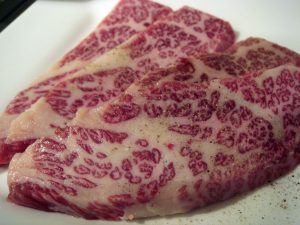
There are also other forms of extremely high end Japanese Beef like Mishima beef and Matsusaka Beef. Mishima beef is much much rarer than Kobe. Kobe beef is a result of breeding Japanese Mishima cattle with European cattle. Currently Mishima beef is still reserved for the royalty and the ultra VIP’s in Japan. Only 20 cows are produced annually on the tiny Mishima Island in the sea of Japan. With only 20 cows each year the waiting list sometimes reaches 5-10 years for even the most exclusive clients across the globe.
Matsusaka Beef is produced using virgin female cows also from theHyogo Prefecture. Only female Waygu cattle can be found in Matsusaka, these lucky cows are taken for daily walks, brushed after being sprayed with Shochu and when they have no appetite given high quality beer to stimulate eating. Soothing music is played to calm the cattle promoting better quality beef.
I consider myself pretty educated when it comes to fine meats and fish, I have tried various forms of Waygu in the states from resturaunts like ” The French Laundry ” to Joel Robuchon’s” and I can tell you that their best steak can not match Japanese Kobe, Sendai, Matsusaka and definatly not Mishima in any way shape or form. I have aquired a fine taste for the nuacnces of fatty marble against oily marble and grass fed vs tofu and ground wheat fed. The difference is there if you savior each and every bite, Try it if you have the chance and dont forget to take pictures for us!
My personal favorite is Kobe Sirloin sliced thin and eaten raw as it contains the perfect amount of oil vs fat along with a nice earthy grass flavor that is very hard to explain.
For more information on how and where to get the highest grade Japanese beef while visiting Japan feel free to contact us for more information. To view more pictures of the baddest steak on the plannet click more to read on…
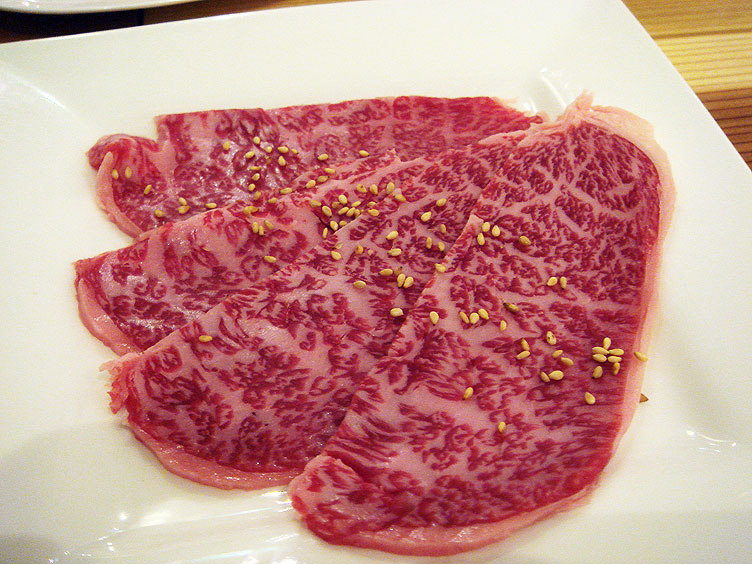
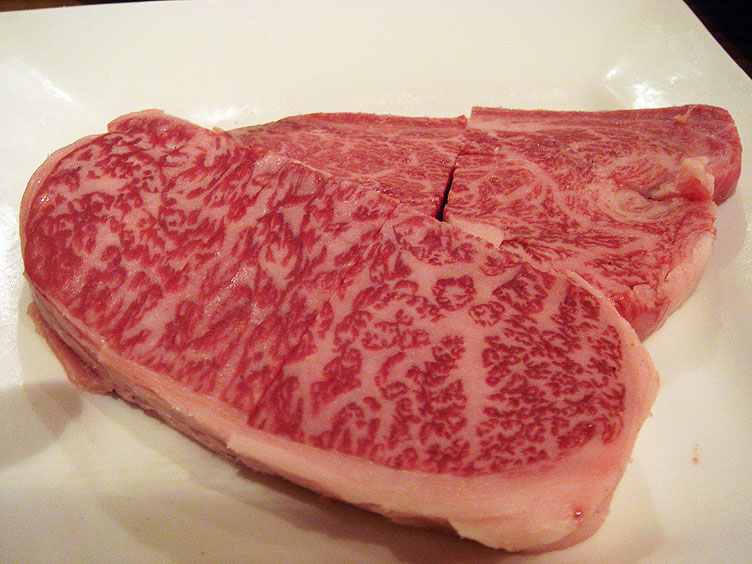
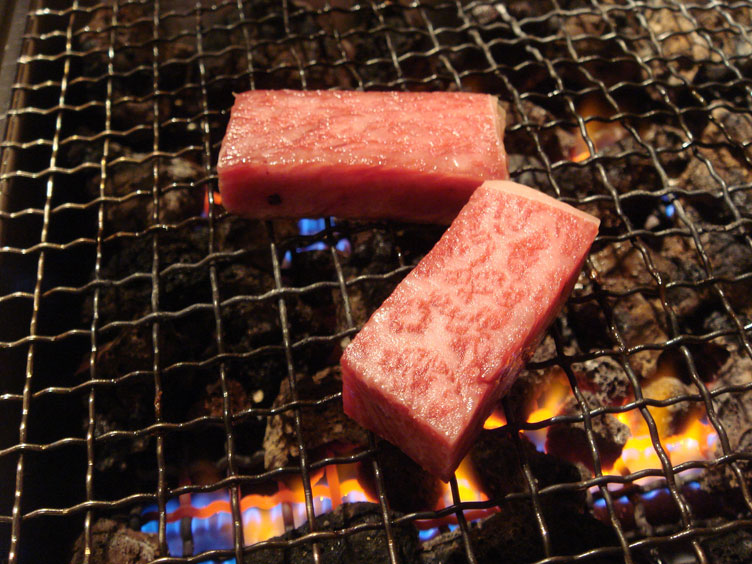


thank you for this, its highly informative and backed by personal experience. I’m grateful as i don’t want to spend 35 bucks for a steak and not get a true experience.
^Josh, Kobe beef doesn’t cost just 35 bucks. It costs about 200.
That meat looks very fatty. Is this stuff hormone free?
Usually. It’s raised to the highest standard. “Fatty” is a misplaced assessment from a rather novice view. Marbling is the highest achievement in beef it not the “chewy” fat you trim around and spit out that you’re thinking of novice. This is beef that is full of flavor and “melts in your mouth”